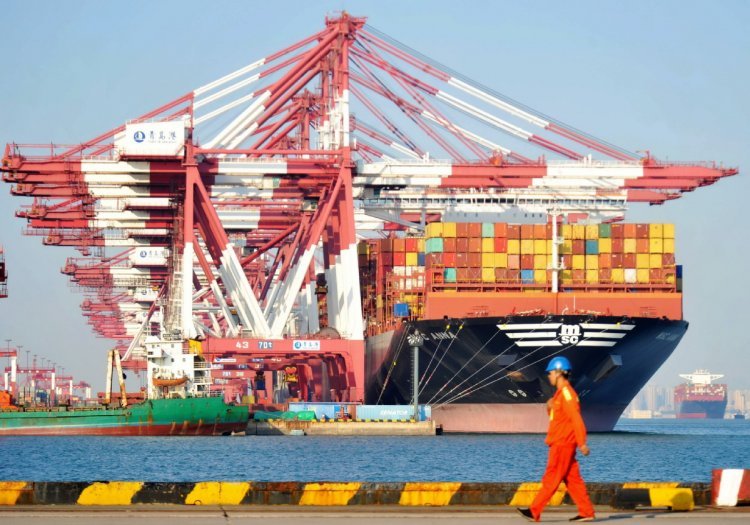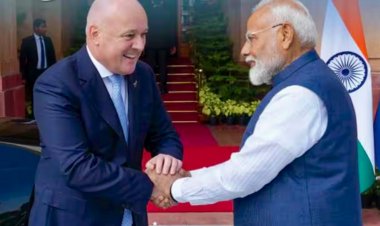AtmaNirbhar Bharat and “vocal for local” notwithstanding, India–China trade relations are at a historical high
If the recent data are any indication, India–China trade relations are at a historical high, completely reversing the frigidity that had set in. Less than a year and a half following the announcements and the initiatives of the Government to decouple from China, the two-way trade between China and India during the calendar year 2021 was $110.5bn. India–China trade has crossed the three-figure mark for the first time, aided by a 42 per cent jump in trade values since a year earlier.

Following China’s incursions in Ladakh during May 2020 and the sacrifices of the soldiers to maintain India’s territorial integrity, economic relations between the two neighbours had reached the lowest point since the 1962 war. The Government of India strongly responded to these developments by taking firm steps to downsize the country’s economic relationship with its largest trade partner. Investments from China and Hong Kong were subjected to enhanced scrutiny and a sizeable number of Chinese apps were banned. Citizens’ groups complemented the Government’s efforts by calling for the boycott of Chinese products. All these developments seemed to resonate well with the AtmaNirbhar Bharat Abhiyan and the call “vocal for local”. The government initiated several measures aimed at decoupling from China and reducing the high level of dependence of several key sectors like pharmaceuticals and electronics on the “factory of the world”.
If the recent data are any indication, however, India–China trade relations are at a historical high, completely reversing the frigidity that had set in. Less than a year and a half following the announcements and the initiatives of the Government to decouple from China, India’s trade links with its northern neighbour have increased like never before. Data released by the Department of Commerce show that the two-way trade between China and India during the calendar year 2021 was $110.5bn.
What is more significant is that the India–China trade has crossed the three-figure mark for the first time, aided by a 42 per cent jump in trade values since a year earlier. Yet another feature of the India-China trade in 2021 was that India’s imports from China were close to $88bn, and this was higher than the annual value of trade between the two countries in the past years. India’s exports, too, were buoyant, increasing by more than 21 per cent over the level in 2020, well above the levels at which they had stagnated in the previous decade. Importantly, India’s trade deficit expanded by nearly 63 per cent to reach $65bn.
India-China Trade (in US $ bn)
|
Year |
Exports |
Imports |
Total Trade |
|
2018 |
16.5 |
73.9 |
90.4 |
|
2019 |
17.1 |
68.4 |
85.5 |
|
2020 |
19.0 |
58.7 |
77.7 |
|
2021 |
23.0 |
87.5 |
110.5 |
Source: Ministry of Commerce
Chinese official sources show that the India–China trade was considerably higher than that reported by the Department of Commerce. According to the General Administration of Customs (GAC) of the People’s Republic of China, total trade between the two countries was $126bn in 2021, higher by 43 per cent over 2020. GAC reports that China’s imports from India had increased by 34 per cent to reach $28bn in 2021, while its exports were close to $98bn. These differences in figures notwithstanding, the level of India and China trade in 2021 highlights the point that India now has a two-way dependence on its neighbour — China is the largest source of India’s imports and the third largest destination of its exports, only a notch below the United Arab Emirates (UAE).
China-India Trade (in US $ bn)
|
Years |
China's exports |
China's imports |
Total Trade |
|
2018 |
76.7 |
18.8 |
95.5 |
|
2019 |
74.8 |
18.0 |
92.8 |
|
2020 |
66.7 |
20.9 |
87.6 |
|
2021 |
97.5 |
28.1 |
125.6 |
Source: GAC of the People’s Republic of China
The key issue is to make an initial assessment of the manner in which bilateral trade is benefiting the two countries, by analysing the commodity composition of trade. Currently disaggregated data for India–China trade are available until November 2021 and, using these figures, a fair assessment can be made of the relative benefits to the two partner countries.
The drivers of India’s exports to China since 2019, the immediate pre-pandemic year that can also be considered as a “normal” year, were iron ores and concentrates, iron and steel products, unwrought aluminium, as well as non-basmati rice. Besides these primary products and intermediates, India was able to increase exports of organic chemicals and telecommunication products, the latter product group registering an increase in exports of over 300 per cent between 2020 and 2021. Thus, despite the long shadow of the pandemic on India’s manufacturing industries, one of the technology-intensive industries was able to expand its market in China, which is known for imposing artificial barriers to imports.
Boosting India’s imports from China were two major product groups, namely electronic products, including consumer electronics and telecommunication products, and active pharmaceutical ingredients. Most of India’s imports, which were valued at a billion dollars or more in 2021, were from these two product groups. This implies that India’s dependence on China in two strategic areas has continued unabated.
Over the past two years, the Government of India has initiated significant measures to shore up the country’s manufacturing sector through the Production Linked Incentive (PLI) scheme. With imports from China increasing to record levels, the Government and the industry would have to carefully consider the next steps that they must take in unison to address India’s China-dependence syndrome.
(Dr Biswajit Dhar is a Professor at Centre for Economic Studies and Planning, School of Social Sciences, Jawaharlal Nehru University. The views expressed here are his own.)



 Join the RuralVoice whatsapp group
Join the RuralVoice whatsapp group







































